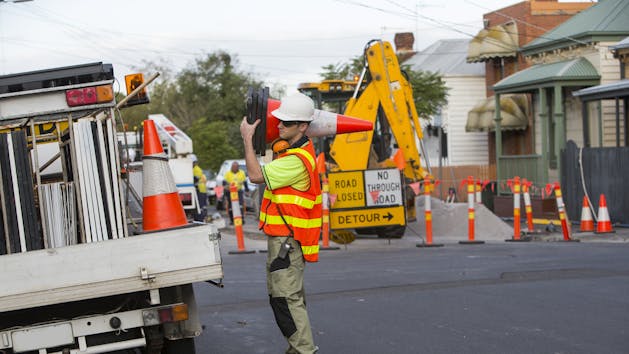Find the right solution for your business with our free Fleet Management Buyer’s Guide.
Why Monitor Harsh Braking and Acceleration?
Should you be monitoring hard braking and acceleration as part of your fleet’s safety program? What actions does your safety manager take when incidents of hard braking or acceleration are reported? Why monitor it at all?
Fleet safety is a key objective for commercial fleets. Avoiding infringements, protecting staff, and working to keep the public safe are all important aspects of a successful safety program. If hard, or harsh, braking and acceleration monitoring isn't already part of your safety program, it should be, and if it is learn why it's such a valuable component of keeping your drivers safe and minimizing the chance of an accident causing injury, unnecessary costs or even death.
What is hard braking/acceleration?
Hard acceleration or braking is a driver event when more force than normal is applied to the vehicle's brake or accelerator. Some people may refer to this as 'lead foot' syndrome, and it can be an indicator of aggressive or unsafe driving. At the very least this style of driving is wasteful and uneconomic.
It should also be noted that hard braking and acceleration events can also indicate crash avoidance, or that a driver has been involved in an accident. Some vehicle GPS systems use ACN (Automatic Crash Notification) to automatically contact emergency services if very hard braking (or deceleration) occurs. It should not be presumed then that HBA (Hard Braking/Acceleration) is always an indicator of unsafe driving.
How is hard braking/acceleration detected?
The accelerometer technology that has made detecting hard braking and acceleration possible has only recently become a viable option for mass production, and inclusion in GPS devices. Previously, accelerometers were simply too expensive to be commercially available. Now the cost has come down to where accelerometers are commonly found in consumer devices such as iPhones or video game controllers.
Simply speaking, accelerometers detect movement, and how much movement, in a particular direction. A commonly used accelerometer is a piezoelectric accelerometer, which uses a suspended mass inside a fixed container. As the container is moved, the mass moves in the opposite direction, putting pressure on the quartz crystal, which in turn converts that pressure into an electric signal. The greater the force, the greater the electrical current.
Depending on how they are being used, accelerometers have different levels of sensitivity, suited to their application, whether it's in a smartphone or inside a motor vehicle.
The electrical current the accelerometer generates will then be used by the device to trigger a report that can be interpreted by telematics software, compiling events for a report or generating an instant alert.
Why monitor hard braking or acceleration?
There are several good reasons to monitor HBA events. Minimizing these events can improve both your fleet safety and profitability.
Wastes fuel — Experts advise that frequent hard acceleration and braking is costing your fleet an extra three miles per gallon. They recommend driving at a steady speed, even pretending that you don't have a brake at all (for the purpose of driving smoothly obviously!). Rather than relying on last-minute braking to prevent a collision, your drivers should be focusing on the road ahead and anticipating changes in terrain or actions by other drivers.
Bad for the planet — Harsh driving has been proven to emit more harmful gases into the atmosphere. By encouraging your drivers to ease off the pedal you can help the planet breathe easier.
Accident risk increases — Drivers that ignore safe following distances increase the risk of nose-to-tail crashes, a common type of accident among city drivers. Hard braking could also result in a truck jackknifing resulting in even more damage. When drivers plan ahead, monitor the weather, and anticipate changing conditions, sudden braking and serious accidents can be avoided.
Brake damage — Excessive harsh braking can cause vehicle brakes to overheat, reducing their useful lifespan, damaging the metal components or glazing brake pads making them less effective. It can also trigger a vehicle's ABS unnecessarily, putting extra stress on the car's systems.
Aggressive driving — There's a well-known saying that implies we drive the way we live. HBA events could be a symptom of a stressed or angry worker, taking out their frustration through driving. Situations like that should be handled as soon as possible to avoid bigger problems later.
Why safety should be important to your fleet
Safety is an investment that should never be undervalued. For some fleets that are prepared to take the risk, it can seem like an unnecessary, and unwanted, expense. That creates a dangerous culture that can filter through the ranks, resulting in drivers ignoring safety precautions and guidelines, endangering lives, both inside and outside of the company.
Safety is not just part of a company's responsibility to its staff but also part of its corporate responsibility to the public in general. With the advancements in technology making it now both economical and simple for fleet managers to detect unsafe driving, such as hard braking and acceleration, there's no excuse for not effectively managing dangerous drivers and implementing safety programs and coaching sessions to make sure all staff comply with safe driving standards.
How can I report on hard braking/acceleration?
If you're not already using your Verizon Connect solution (such as Verizon Connect Fleet, Hino INSIGHT 2.0 or Ford Telematics™ powered by Verizon Connect) to monitor hard braking and acceleration, consult the help documentation on setting up an InSight Alert to report this type of activity.
You can also look into Verizon Connect Coach, a real-time training tool that encourages drivers to self-correct with a point system that creates friendly competition among fellow drivers.
It's just another way to make sure your fleet is promoting safety at every turn.
Find out how our platform gives you the visibility you need to get more done.




